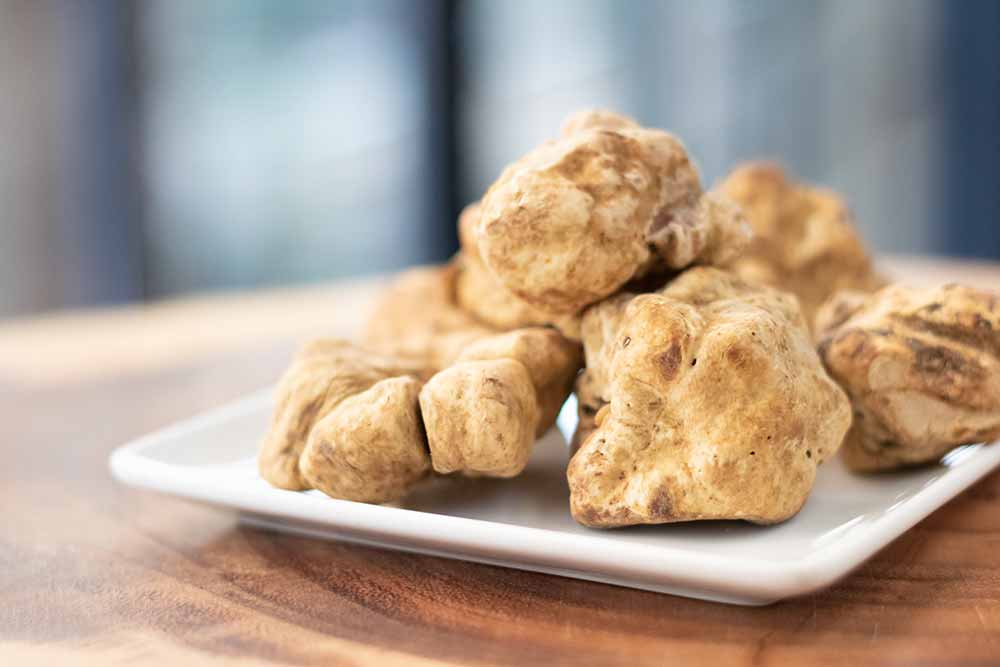The Science and Commerce of Fresh Truffles: From Dog Training to Gourm…
페이지 정보

본문
Truffles, the enigmatic subterranean fungi of the genus Tuber, have captivated human fascination for centuries. Prized for their aromatic complexity and culinary value, these mycological treasures are equally significant in ecological and economic contexts. This article explores the multifaceted world of truffles, addressing their biological diversity, commercial dynamics, and innovative applications in dog training, while providing insights into preservation, pricing, and market trends.
Truffle Biology and Species Diversity
Truffles form symbiotic relationships with tree roots, thriving in specific soil and climatic conditions. Over 180 species exist, but only a few hold commercial significance. Tuber magnatum pico, the white Alba truffle, reigns as the most coveted, with prices exceeding €5,000 per kilogram due to its limited habitat in Italy’s Piedmont region. Tuber melanosporum, the black Périgord truffle, follows closely, celebrated for its robust aroma and widespread use in haute cuisine. Lesser-known varieties like Tuber brumale and Tuber aestivum (summer truffle) offer more affordable alternatives, though their subtler flavors distinguish them from premium counterparts.
Recent studies highlight the genetic adaptability of species like Tuber borchii and Tuber macrosporum, which thrive in diverse microclimates. However, artificial cultivation remains challenging, with only Tuber melanosporum and Tuber uncinatum (Burgundy truffle) successfully farmed at scale.
Truffle Hunting: Canine Training and Techniques
The traditional use of pigs in truffle hunting has largely been replaced by dogs, whose keen sense of smell and trainability make them ideal partners. Modern truffle dog training kits incorporate scent-based tools, such as frozen white truffle samples or truffle oil, to imprint the fungus’s aroma on canines. Ethical concerns regarding truffle oil for dogs have arisen, but veterinarians confirm that high-quality, all-natural truffle oil poses no health risks when used sparingly in training.
Specialized kits often include mock truffle hides and reward systems to reinforce detection skills. The rise of truffle dog training programs in regions like Oregon and Tasmania underscores the globalization of truffle cultivation.
Economic Dynamics: Pricing, Wholesale, and Market Trends
Truffle markets operate on scarcity and seasonality. Fresh Tuber magnatum commands premiums during its October–December season, while summer truffles (Tuber aestivum) dominate mid-year markets. Wholesale buyers prioritize provenance, with Italian white truffles and French black truffles setting benchmark prices. In 2023, Tuber melanosporum averaged €1,200/kg, whereas Tuber brumale traded at €300/kg.
Online platforms have democratized access, enabling direct sales of frozen black truffles, dehydrated slices, and minced truffle products. However, fraud remains prevalent, with synthetic oils and lower-grade species like Tuber mesentericum mislabeled as premium varieties. Blockchain traceability initiatives are emerging to ensure authenticity.

Culinary Applications and Product Innovation
Truffles elevate dishes through minimalistic use—shaved over pasta, infused into oils, or blended into sauces like tartufata. Minced black truffle, preserved in olive oil, offers a cost-effective way to impart umami depth to risottos and soups. Chefs caution against overheating, which diminishes volatile aromatic compounds like androstenone.
Innovations include freeze-dried truffle powders and truffle-infused honey, though purists argue these lack the nuance of fresh specimens. Notably, the demand for truffle oil for dogs has spurred niche pet products, though its culinary-grade counterpart remains contentious due to frequent use of synthetic flavorants.
Scientific Advances in Truffle Cultivation
Research into Tuber magnatum cultivation has intensified, with mycorrhizal inoculation of oak and hazelnut saplings showing promise. A 2022 study demonstrated that soil pH adjustments and controlled irrigation could enhance yields by 40% in experimental plots. Genetic sequencing of Tuber melanosporum has also identified markers linked to aroma production, paving the way for strain optimization.
Despite progress, climate change threatens natural habitats. Rising temperatures in Mediterranean regions have already altered truffle seasons, with Tuber aestivum fruiting periods shifting earlier by two weeks over the past decade.
Preservation Methods and Shelf Life
Fresh truffles are highly perishable, lasting 7–10 days at 2–4°C. Freezing (-18°C) extends shelf life to six months, albeit with texture loss. Dehydration and vacuum-sealing are popular for commercial products like dried black truffle slices, though these methods reduce aroma potency by 60–70%.
Emergent technologies, such as high-pressure processing (HPP), aim to preserve freshness without additives. Meanwhile, DIY enthusiasts advocate for storing truffles in Arborio rice or eggs, which absorb their aroma for secondary use.
Conclusion
Truffles straddle the line between luxury and science, tradition and innovation. From truffle-hunting dogs trained with artisanal kits to blockchain-tracked wholesale shipments, the industry evolves while grappling with sustainability and authenticity challenges. As research demystifies their ecology and cultivation, truffles will continue to inspire gastronomic and economic fervor—one fragrant shaving at a time.
- 이전글Pin Up Casino Full Walkthrough 25.11.06
- 다음글Analyse Myriad Recreation: The Later of Grown up Substance Platforms 25.11.06
댓글목록
등록된 댓글이 없습니다.